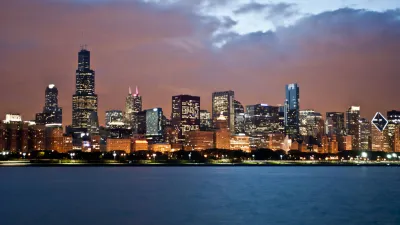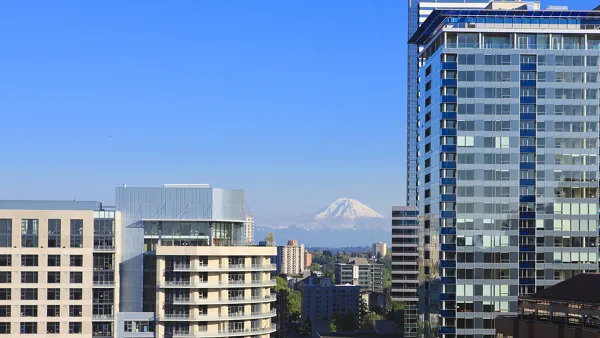For a variety of economic reasons in addition to urban preferences, young people are not leaving the country's three major metropolitan areas: New York, Los Angeles, and Chicago, and that's not good for the nation's economy nor the individuals.

"For decades, young people flocked to the U.S.’s three biggest metro areas to build careers before taking their talent and spending power elsewhere to raise families," writes Neil Shah who covers the U.S. economy and demographics from The Wall Street Journal's New York office. "That pattern now appears to be fading as more young workers stay put."
Young adults who moved to the three cities for school, internships or early jobs—or simply because it seemed cool—may now be stuck, said William Frey, a demographer at the Brookings Institution.
The findings (see chart) are based on an analysis of census data by the Brookings Institution and The Wall Street Journal.
From 2004 to 2007, before the recession, an average of about 50,000 adults aged 25 to 34 left both the New York and Los Angeles metro areas annually, after accounting for new arrivals.
Fewer than 23,000 young adults left New York annually between 2010 and 2013. Only about 12,000 left Los Angeles—a drop of nearly 80% from before the recession. Chicago’s departures dropped about 60%.
The findings might seem counter-intuitive considering the higher cost of living, particularly in housing, in major urban areas. Indeed, that was shown to be the case in a 2013 post about increased out-migration from Toronto and San Francisco, although it was not age-specific. Similarly, an August post shows that affordable cities are the fastest growing ones.
No one reason is attributed to the diminished urban out-migration of young people from New York, Los Angeles, and Chicago.
Increased financial insecurity may play a role, especially for young people shouldering big student debts. ..
In tough times, finding well-paying jobs may be easier in big cities, offsetting their relatively high costs of living.
"Some Americans are actively choosing big-city life," writes Shah. "The urban cores of metropolitan areas are growing slightly faster in percentage terms than their suburbs, though many more Americans still move to the suburbs from cities than the other way around."
Migration also helps distribute human capital and economic demand more widely, demographers contend, allowing states with weaker economies to benefit from those with stronger ones.
FULL STORY: More Young Adults Stay Put in Biggest Cities

National Parks Layoffs Will Cause Communities to Lose Billions
Thousands of essential park workers were laid off this week, just before the busy spring break season.

Retro-silient?: America’s First “Eco-burb,” The Woodlands Turns 50
A master-planned community north of Houston offers lessons on green infrastructure and resilient design, but falls short of its founder’s lofty affordability and walkability goals.

Delivering for America Plan Will Downgrade Mail Service in at Least 49.5 Percent of Zip Codes
Republican and Democrat lawmakers criticize the plan for its disproportionate negative impact on rural communities.

Test News Post 1
This is a summary

Test News Headline 46
Test for the image on the front page.

Balancing Bombs and Butterflies: How the National Guard Protects a Rare Species
The National Guard at Fort Indiantown Gap uses GIS technology and land management strategies to balance military training with conservation efforts, ensuring the survival of the rare eastern regal fritillary butterfly.
Urban Design for Planners 1: Software Tools
This six-course series explores essential urban design concepts using open source software and equips planners with the tools they need to participate fully in the urban design process.
Planning for Universal Design
Learn the tools for implementing Universal Design in planning regulations.
EMC Planning Group, Inc.
Planetizen
Planetizen
Mpact (formerly Rail~Volution)
Great Falls Development Authority, Inc.
HUDs Office of Policy Development and Research
NYU Wagner Graduate School of Public Service





























